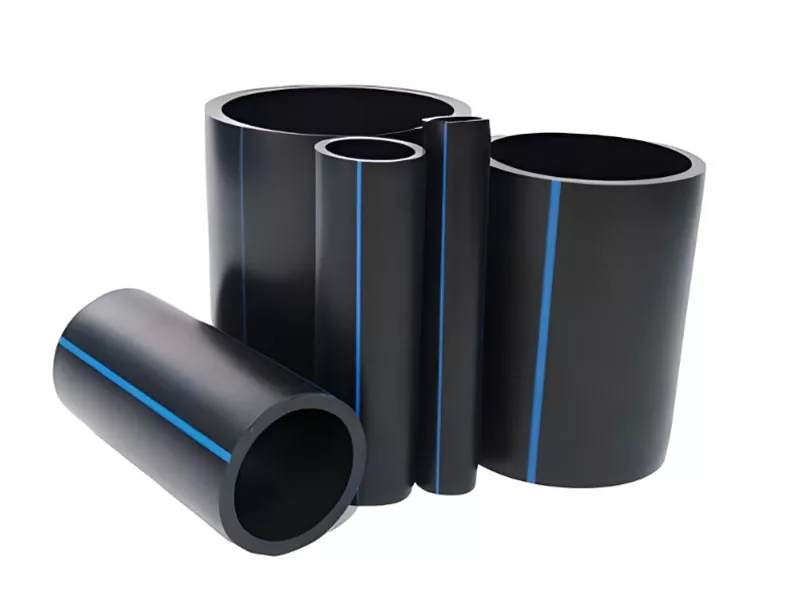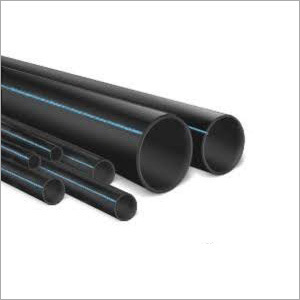Why Texas hdpe pipe manufacturer Is Dominating in Modern Infrastructure
The Essential Steps for Effective Setup of HDPE Pipe in Your Following Project
Effective installation of HDPE pipeline requires careful planning and execution. Key actions include examining task requirements, preparing the site, and choosing proper joining techniques. Each phase plays an important function in making certain the integrity and efficiency of the pipe. Understanding these vital actions can substantially influence the overall success of the project - Midland TX HDPE Pipe Fittings in Stock. The subtleties of each step may hold the trick to overcoming usual obstacles faced during setup.
Recognizing the Conveniences of HDPE Pipe
High-density polyethylene (HDPE) pipe supplies numerous advantages that make it a preferred option for numerous applications. Its high resistance to deterioration and chemicals assurances longevity sought after environments, significantly prolonging the life expectancy of setups. Additionally, HDPE's adaptability allows for easier installation, especially in difficult terrains, as it can flex without damaging. The light-weight nature of HDPE pipe streamlines transport and handling, minimizing labor costs throughout setup.
Moreover, HDPE pipe is recognized for its low rubbing coefficient, which improves fluid flow and reduces energy consumption. Its seamless construction reduces the danger of leakages, adding to better resource administration and environmental management. Additionally, HDPE is recyclable, aligning with lasting techniques and reducing environmental impact. In general, the mix of stamina, adaptability, and eco-friendliness makes HDPE pipeline a superior option for a large range of tasks, from water circulation to industrial applications.
Preparation Your HDPE Pipe Installation
When preparing an installation of HDPE pipe, cautious consideration of several crucial elements is vital to secure an effective job. Job managers have to analyze the details requirements of the pipe, including the planned use, circulation rates, and ecological conditions. Comprehending these specifications will certainly assist the selection of ideal pipe measurements and material quality.
Next, timelines need to be established, factoring in purchase routines and any prospective delays. Coordination with local authorities for permits and regulatory conformity is likewise essential. Additionally, a comprehensive budget plan needs to be prepared, encompassing all expenses related to materials, labor, and machinery.
Last but not least, it is crucial to involve a qualified group experienced in HDPE pipeline installment. Their experience will certainly help reduce risks, guarantee adherence to sector criteria, and eventually add to the job's success. Comprehensive preparation prepares for a smooth installment procedure and long-lasting performance of the HDPE piping system.
Preparing the Site for Installment
Appropriate website preparation is important for the effective installation of HDPE pipeline. Before installation begins, the website must be extensively evaluated to ensure it meets all required requirements. This consists of surveying the ground for existing frameworks, utilities, and potential threats that could restrain the setup procedure.

Appropriate altitude and positioning need to be established to keep a consistent slope for drainage objectives. Correct drainage around the setup website is additionally critical to stop water build-up, which can bring about complications down the line.
Methods for Joining HDPE Pipings
Achieving a trusted link in between HDPE pipes is crucial for making sure the honesty and durability of the setup. Numerous methods exist for signing up with these pipelines, each suited for various job requirements. Combination welding is one of the most usual techniques, utilizing warmth to bond the pipe finishes with each other, creating a seamless and sturdy connection. This strategy can be additional classified into socket combination and butt combination, depending on the pipeline arrangements.
Mechanical installations are an additional choice, employing clamps and threaded adapters to join sections of HDPE pipeline. While typically faster to mount, they may call for additional maintenance in time. Electrofusion is a specific method that includes using electrical existing to heat and fuse the pipelines through specially designed installations, making certain a solid bond. Choosing the suitable joining technique is crucial, as it straight influences the general performance and reliability of the HDPE piping system in the intended application.
Testing and Examination of Installed Piping
The screening and evaluation of set up HDPE pipelines are important to ensuring their functionality and long life. This procedure includes visual examination techniques, stress screening methods, and leakage discovery procedures to identify possible issues. By using these approaches, experts can verify the integrity of the setup before it is taken into usage.
Aesthetic Inspection Techniques
Utilizing efficient aesthetic examination techniques is vital for ensuring the integrity of installed HDPE pipelines. Assessors must methodically analyze all visible sections of the pipe to recognize any type of indicators of damages, misalignment, or incorrect setup. Trick indications to evaluate include joint stability, surface area abnormalities, and links. Examiners may make use of devices such as multiplying glasses or electronic cameras to enhance visibility and detail. It is necessary to look for indicators of ecological anxiety, such as twisting or excessive flexing, which could jeopardize performance. Constant documents of findings permits for tracking modifications over time and aids guide essential repair services. By adhering to well-known aesthetic inspection methods, job teams can especially minimize the risk of future failures and assure long-lasting reliability of the piping system.
Stress Checking Methods
Visual inspection acts as an initial measure, yet it is not adequate by itself to assure the efficiency of more info installed HDPE pipelines. Pressure screening methods are important for guaranteeing the stability of these systems. Usually, hydrostatic testing is utilized, where the pipes are full of water and subjected to stress levels over the desired operating stress. This method helps determine weaknesses or prospective leaks. Pneumatic screening can additionally be utilized, although it lugs greater threats due to the compressibility of air. No matter the technique picked, adhering to market requirements and safety and security procedures is crucial. After carrying out pressure examinations, extensive documentation is needed to verify the results and confirm that the installment fulfills all functional requirements before proceeding to the next stage of the project.

Leak Discovery Procedures
Exactly how can one ensure that set up HDPE pipes are devoid of leaks? Reliable leakage detection treatments are important to secure the integrity of the system. Initially, aesthetic examinations need to be performed, seeking indicators of water buildup or soil erosion around pipeline joints. Following this, stress testing can validate the system's toughness. A common method is the hydrostatic test, where water is presented under stress, keeping an eye on for declines that indicate possible leakages. Furthermore, progressed technologies, such as acoustic sensing units or infrared thermography, can discover leaks that might not show up. Regular surveillance and maintenance further add to the longevity of HDPE pipelines, ensuring they remain leak-free throughout their functional life-span. Proper documentation of these treatments is essential for conformity and future referral.
Upkeep Tips for Long-Term Efficiency
To guarantee the durability of HDPE pipes, developing a regular evaluation routine is necessary. This proactive approach permits the early detection of prospective problems, lessening pricey fixings. Additionally, implementing appropriate cleansing strategies will help maintain peak efficiency and stop buildup that can affect performance.
Regular Evaluation Schedule
HDPE pipelines are known for their durability and resistance to deterioration, establishing a normal examination schedule is important for ensuring their long-term efficiency. Regular examinations aid recognize possible concerns such as leakages, joint stability, and environmental impacts that may impact the pipe's capability. It is advised that examinations occur at least biannually, or much more often in atmospheres with severe problems. custom hdpe pipe manufacturing Midland TX. During these assessments, aesthetic checks must be performed to identify indicators of wear or damages. Furthermore, making use of modern technology such as ultrasonic screening can supply further understandings right into the pipeline's condition. By applying a structured inspection routine, job supervisors can proactively deal with issues, consequently expanding the lifespan of HDPE pipelines and keeping system efficiency
Appropriate Cleansing Techniques
Proper cleansing strategies play a necessary duty in maintaining the long-term performance of HDPE pipes. Regular cleaning protects against the buildup of debris, sediment, and biofilm, which can result in blockages and decreased circulation effectiveness. Operators should employ methods such as high-pressure water jetting or foam cleaning to successfully eliminate impurities without damaging the pipe surface. It is important to prevent using extreme chemicals that might degrade HDPE material. In addition, arranged upkeep checks ought to consist of visual examinations for any kind of indicators of wear or damages. Appropriately trained employees need to perform these cleansing procedures, ensuring compliance with safety and ecological laws. By executing these practices, the lifespan of HDPE pipelines can be greatly extended, making certain perfect efficiency throughout their operational life.
Often Asked Inquiries
What Are the Ecological Influences of HDPE Pipe Production?
The ecological effects of HDPE pipe manufacturing include greenhouse gas emissions, energy intake throughout manufacturing, potential plastic pollution, and obstacles in recycling. HDPE's long life and resistance to deterioration can minimize some environmental worries.
How Does HDPE Pipeline Contrast to Various Other Products?

What Tools Are Essential for HDPE Pipe Installment?
Important devices for HDPE pipeline installment include a blend device, pipe cutters, shovels, measuring tape, and safety gear. Appropriate devices guarantees effective, risk-free handling and setup, adding to the job's total success and honesty.
Exist Any Type Of Particular Regulations for HDPE Pipeline Setup?
Details policies for HDPE pipeline setup vary by area, often regulated by local, state, or government codes. Conformity with these guidelines guarantees safety, environmental management, and functionality, making adherence essential for effective project end results.
Can HDPE Water Lines Be Recycled After Usage?
Yes, HDPE pipes can be recycled after usage. Their polycarbonate nature enables reprocessing, making them suitable for reusing into brand-new items. This sustainability element adds to ecological conservation and promotes circular economy methods in construction.